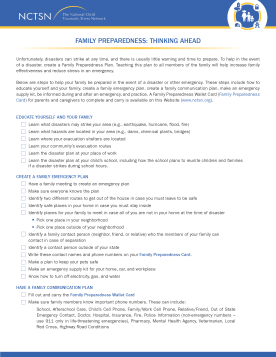
Family Preparedness: Thinking Ahead
Accompanies the Family Preparedness Wallet Card. This guide helps families develop a safety plan so that they may be prepared in the event of disasters.
The following resources on child trauma were developed by the NCTSN. To find a specific topic or resource, enter keywords in the search box, or filter by resource type, trauma type, language, or audience.

Accompanies the Family Preparedness Wallet Card. This guide helps families develop a safety plan so that they may be prepared in the event of disasters.
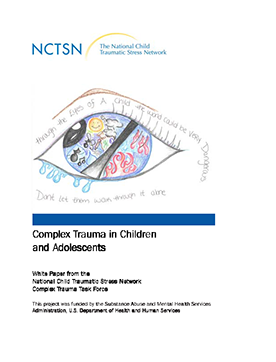
Provides an overview of complex trauma in children and adolescents.
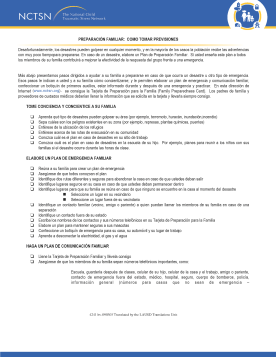
Acompaña al documento Tarjeta de Preparación para la Familia. Ayuda a las familias a desarrollar un plan de emergencias para que puedan estar preparados en caso de un desastre. Esta es la versión en español de Family Preparedness: Thinking Ahead.

Defines child traumatic stress. This fact sheet gives an overview of trauma, describes traumatic stress symptoms, and ways children may be impacted.
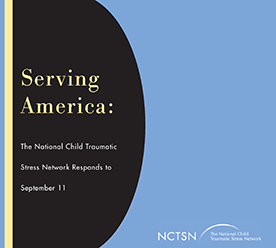
Summarizes the NCSTN's response to the September 11th attacks and includes an introduction to the NCTSN and NCTSN 9/11-related activities.
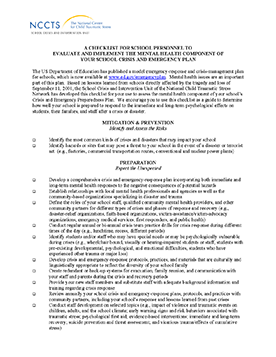
Assesses the mental health component of a school’s crisis and emergency preparedness plan.
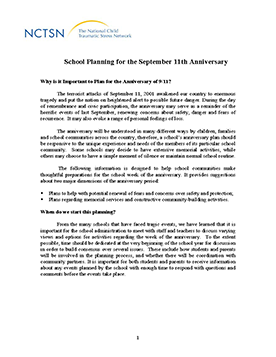
Offers guidance to school staff, administrators, and educators about the importance of planning for a September 11th anniversary.
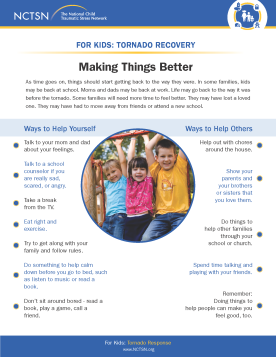
Offers information to children on ways to help themselves and others after a tornado.
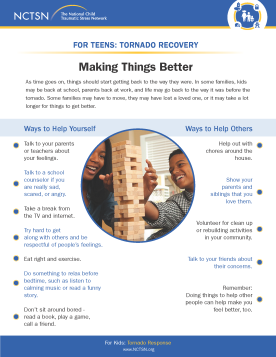
Offers information to teens on ways to help themselves and others after a tornado.
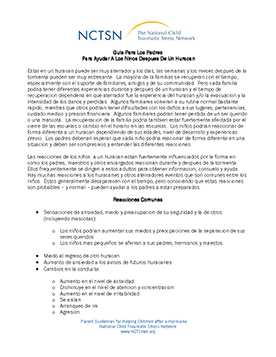
Offers parents guidance on helping their children after a hurricane. This fact sheet describes common reactions children may have after a hurricane, what to do to help, and self-care tips for parents.

Provides parents and caregivers with tips on media coverage of traumatic events.
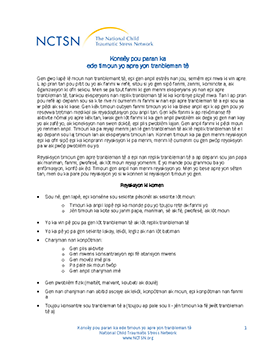
Offers parents guidance on helping their children after an earthquake. This fact sheet describes common reactions children may have after an earthquake, what to do to help, and self-care tips for parents.